- Home
- slideshows
- miscellaneous
- China's aircraft carriers have a boatload of glaring weaknesses - but the next carrier could be a 'huge step forward'
China's aircraft carriers have a boatload of glaring weaknesses - but the next carrier could be a 'huge step forward'
Power and propulsion

Aircraft launch system
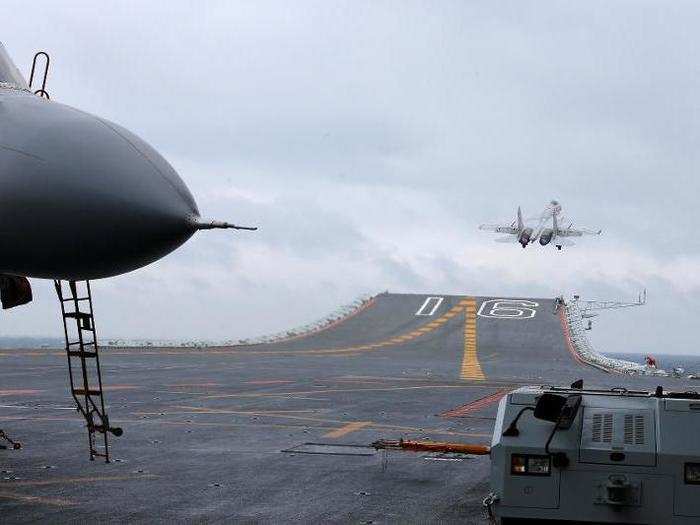
Both the Liaoning and China's first domestically-built aircraft carrier use ski jump-assisted short take-off but arrested recovery (STOBAR) launch systems, which are less effective than steam or electromagnetic catapult-assisted take-off but arrested recovery (CATOBAR) launch systems like those used and being developed by the US and French navies.
For example, while the Nimitz-class supercarrier USS Ronald Reagan can launch an aircraft with a maximum weight of roughly 100,000 pounds, an aircraft taking off from the Liaoning would be significantly limited, perhaps to as little as 60,000 pounds. That means less fuel, fewer armaments, and reduced combat capability.
STOBAR systems, while having the benefit of being simple technology with few moving parts, also put greater strain on the aircraft and tend to result in reductions in operational range, payload size, and ultimately the number of flights the onboard aircraft can fly.
Pilots

"They don’t have a whole lot of pilots. Not a lot of capacity in that area," Funaiole said, adding that Chinese pilots largely lack the ability to take off and land at night, a skill necessary for advanced carrier combat capability.
The Chinese state media outlet Global Times heralded what appeared to be the Liaoning's first successful completion of a nighttime take-off and landing mission in May.
China is believed to have only one or two dozen pilots with training suitable for carrier operations, and training has been costly over the years, not just in terms of damaged or destroyed planes, but lost lives as well.
"Two test pilots of the squadron sacrificed their lives during" flight testing for the Liaoning's carrier-based Shenyang J-15 "Flying Shark" fighter jets, the China Daily reported back in 2014. Another pilot was killed in a training accident in 2016, the South China Morning Post reported at the time.
Chinese state-run broadcaster CCTV revealed earlier this year that while take-off can be a challenge, landing on the Liaoning requires "a little bit luck plus a strong body and mind," according to a report from the Asia Times.
According to CSIS, training American pilots to master the dangerous tasks of taking off and landing on a carrier required around four decades and cost thousands of lives and aircraft. China has the benefit of learning from others, but the challenge ahead is no easy task for the carrier-based pilots.
Planes

"The J-15 is not the most efficient carrier platform. It’s probably the heaviest airplane that takes off on a carrier right now," Funaiole said. He also noted that its weight, coupled with the launch systems on the Liaoning and Type 001A, force the Chinese Navy to sacrifice capability just to get the fighters in the air.
Not only is the fighter — a derivative and descendant of Soviet platforms — too big and too heavy for use aboard China's smaller aircraft carriers, but it is also too unreliable.
Planes (continued)
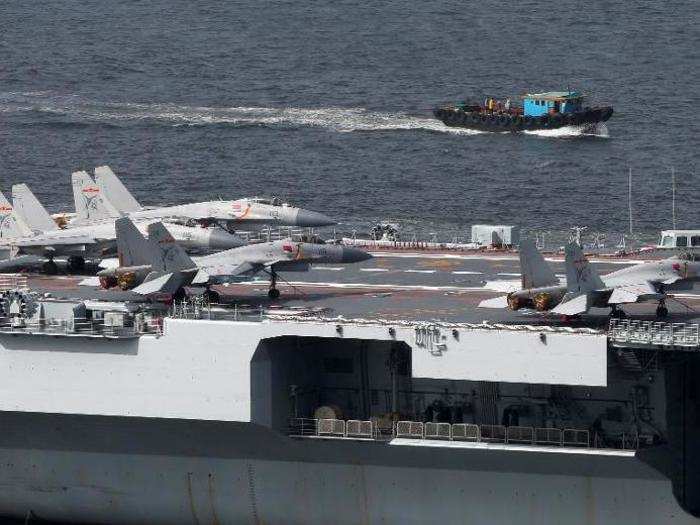
"The J-15 is a problematic aircraft ... its unstable flight control system was the key factor behind" some of the fatal accidents during testing and training, a source close to the Chinese military told the South China Morning Post in July.
Even with a catapult-assisted launch system, the fighter jet, which is based on a design that is now around 30 years old, would likely begin to break down after being forcefully hurled off the carrier a few times, experts suspect.
China is reportedly considering replacing the fourth-generation J-15, which has a maximum take-off weight of more than 70,000 pounds, with a lighter, more durable aircraft. Uncorroborated rumors suggest that China might be looking at the FC-31 stealth fighter, a relatively new military aircraft that is comparable to but noticeably less capable than the American F-35 Lightning II Joint Strike Fighter.
Knowledge of carrier operations
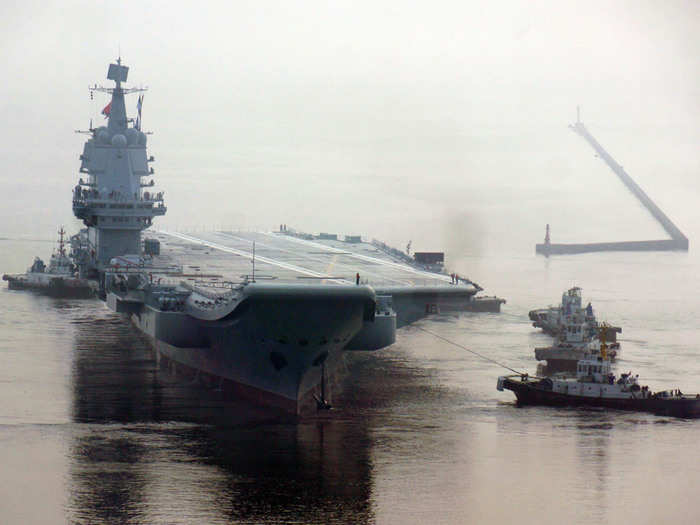
"They are very new to carrier operations," Funaiole said. "They have never operated carriers in any high-intensity situations. They still have a lot of training to do. They aren’t sure about their doctrine."
"They really have to figure out what their mission set is going to be," he added.
Between December 2016 and January 2017, the Liaoning aircraft carrier, accompanied by several support ships, conducted drills in the Bohai Sea, Yellow Sea, East China Sea, Western Pacific, and South China Sea.
China's first carrier has since participated in other naval exercises, including additional live-fire drills in the East China Sea and Western Pacific. In March, the Liaoning led a major show of force maneuver in the South China Sea involving dozens of Chinese People's Liberation Army Navy ships.
Chinese state media has previously declared that China's carrier force will eventually be able to patrol deep into the Eastern Pacific, demonstrating its capabilities along America's east coast. "This is the song and destiny of China’s carrier!" the state-run People's Daily asserted last year. China's not there yet.
Mysterious Type 002 Could Be A 'Huge Step Forward'

"The new one, the Type 002, is something that might be a little more interesting, a little more compelling," Funaiole introduced.
In June, China Shipbuilding Industry Corporation (CSIC), a Chinese firm involved in constructing the country's aircraft carriers, posted a photo of three aircraft carriers, with two being the Liaoning and Type 001A and one suspected of being the Type 002. The picture was deleted, but not before it became a hot topic of discussion among military analysts, according to The National Interest.
The picture, which appeared to feature an artist's rendering of the Type 002 rather than an actual image of the ship, showcased a flat flight deck with an apparent CATOBAR launch system, suggesting that China's newest carrier may be able to pack more of a punch than its two predecessors.
Chinese Major General Yin Zhuo told the People's Daily in 2013 that "China's aircraft carrier will follow the path of technical revolution, creating an information based vessel with an electromagnetic aircraft launch system, and a comprehensive electronic system."
Type 002 (continued)
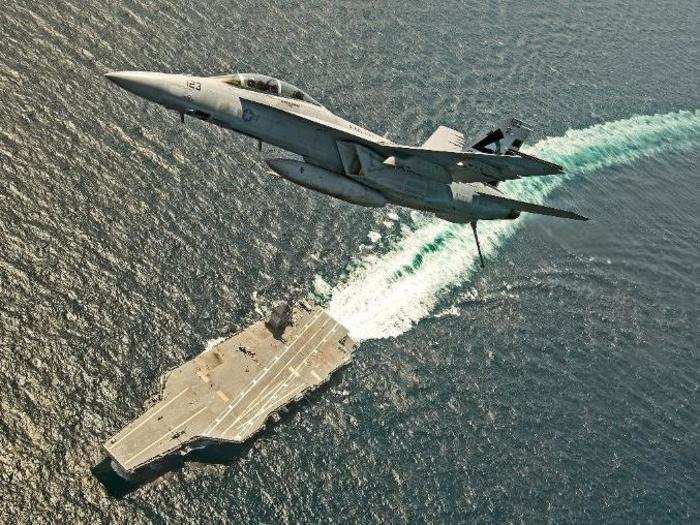
As of last year, there were several reports and rumors that China was researching and developing an electromagnetic aircraft launch system (EMALS), a system the US has designed for its Ford-class carrier.
"If the third carrier, the Type 002, does have some catapult-assisted launch system, that will be a huge step forward for China," Funaiole said. "They would very quickly have moved closer to what current technology is. That’s something that very few countries can do. That would put China in a very elite status."
This is what everyone is waiting to see with China's newest carrier.
A CATOBAR system of any kind would significantly boost the overall combat capabilities of China's carrier force, as it would not only be able to launch aircraft with additional fuel and armaments for greater operational range and combat power, but the Chinese navy could also launch heavier airborne early warning aircraft to better protect the carrier fleet.
Catapult-assisted launch systems also allow China the ability to launch aircraft more quickly, increasing reaction time in any potential engagement.
China's carriers don't hold a candle to the US Navy ... for now
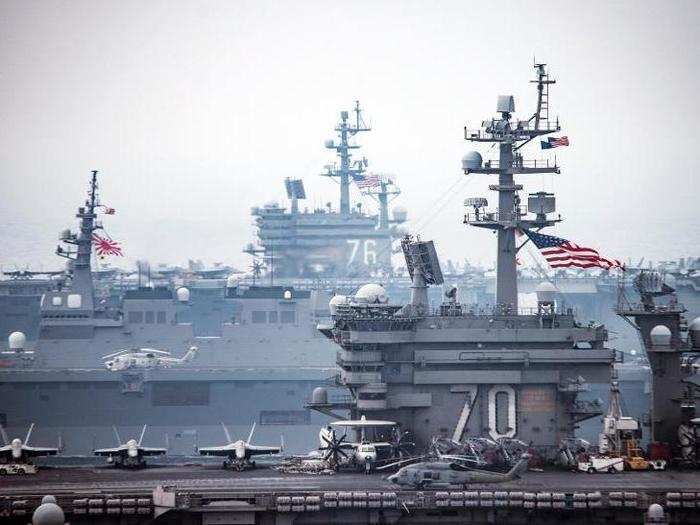
China has the ability to turn out ships at incredible speed, which has allowed it to build the largest naval force in the world. But its capabilities at sea do not hold a candle to the power of the US Navy, experts say.
US Navy Vice Admiral Tom Rowden, the former head of Naval Surface Forces, compared the Chinese and the US navies last year, and said "one of them couldn't fight their way out of a wet paper bag and the other one will rock anything that it comes up against."
The same holds true across the Chinese navy, including the branch's carrier force, but China is just getting started.
"There's certainly a tendency among people who look at China’s aircraft carriers to make an immediate comparison with the United States," Funaiole said. "That’s a little bit unfair because the US has been doing this for 90 years and the Chinese are just now getting into the carrier game."
"If you put the two side by side," he added, "obviously the US has huge advantages in terms of technology and knowledge of carrier operations." He said that compared to the US Navy's carriers, the Liaoning looks pretty weak, despite what Chinese state media suggests.
But, the Liaoning and the Type 001A are not necessarily intended as advanced combat platforms. Rather, they are evidence that China is "practicing how to build and operate carriers" for the next phase of its emergence as major military power.
The Chinese "are really trying to put together a few carrier fleets and figure out what their [areas of responsibility] are going to be. I think it is realistic that they will build four to six carriers within the next ten years," Funaiole speculated, suggesting that potential AORs include the South China Sea and possibly the Indian Ocean.
While Chinese carriers are currently no match for the US Navy, China has its neighbors outgunned, especially in Southeast Asia, where Funaiole argues "no country is going to have the capacity to even match China in any way technologically."
Popular Right Now
Popular Keywords
Advertisement